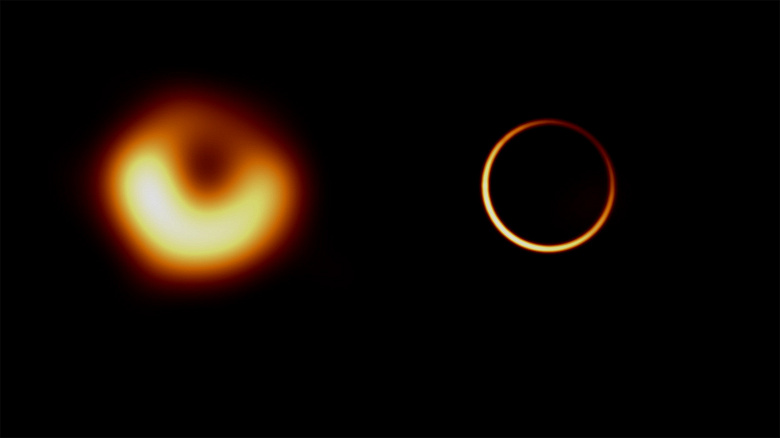The study proposes an approach to observe and study the photon ring around black holes, which could reveal a lot of information about them. For this purpose, it is proposed to place an array of space radio interferometers with an ultra-long base at the Lagrange point L2
Understanding the physics of supermassive black holes comes from studying data from their accretion disks and the jets they eject, as well as observations of objects such as M87* and Sag A*. However, scientists have still not been able to capture the photon ring around the black hole. A new study offers a new approach to this task.
Black holes are structures in space and time that bend them. The event horizon of a black hole is a surface through which light can only pass once: anything that passes through the horizon remains inside the black hole. In addition, next to the black hole, there is a photon shell, which represents the inner limit of stable circular orbits of photons. This limit is located at a distance of 1.5 event horizon radii.

The event horizon and the photon envelope cannot be observed directly, but it is possible to detect their closest equivalent – the photon ring, which is formed when photons make several half-turns around a black hole, and their paths bend towards the observer. For an ordinary black hole, the radius of the photon ring is about 2.6 times the radius of the event horizon. In the case of a rotating black hole, the radius of the photon ring may differ, since rotation increases the energy of the photons in the direction of rotation. The photon ring is the closest black hole structure to us, and its observation can provide a lot of information about black holes and Einstein’s theory of gravity.
Astronomers have proposed a way to observe the photon ring of a black hole
So far, the photon ring of the M87* black hole has been recognized in data obtained with the Event Horizon Telescope (EHT), but with low resolution. Current resolution capabilities have reached their limit; astronomers are unable to isolate the photon ring from the background with greater clarity.
So in a new study, astrophysicists proposed using a space-based Very Long Baseline Interferometer (VLBI) array to obtain high-resolution images of the M87* photon ring and other supermassive black holes, such as the one in the Andromeda galaxy (M31). To do this, scientists proposed placing radiation receivers in orbit around the Earth at the Lagrange point L2. Such a telescope would be able to obtain data with a field of view larger than the diameter of the Earth.
This research is conceptual, and the implementation of such a telescope will require significant effort and time. However, the ideas expressed in this work are worthy of attention, since the photon ring is the main target of astronomical research on black holes. The ability to observe and study photon rings will help overcome current limitations and advance our understanding of black hole physics and gravity.




